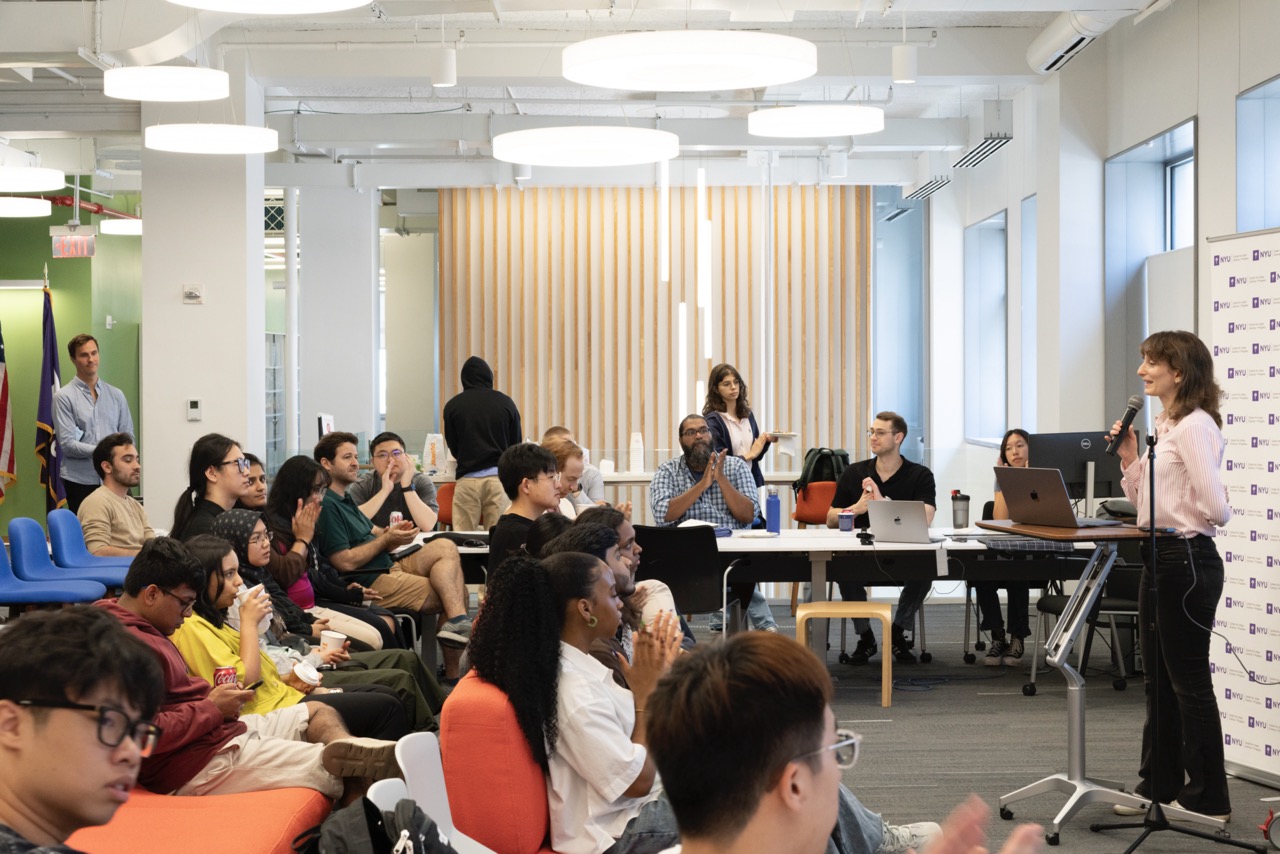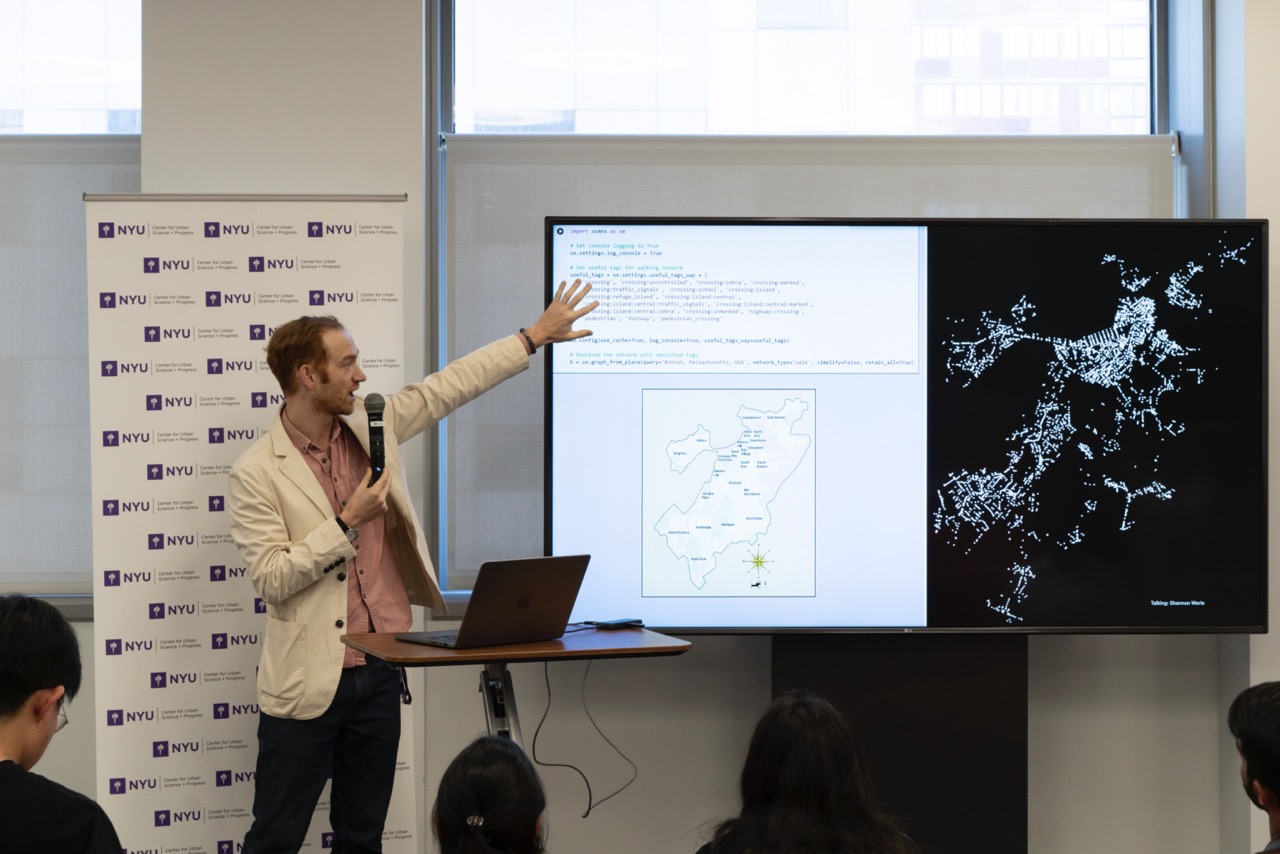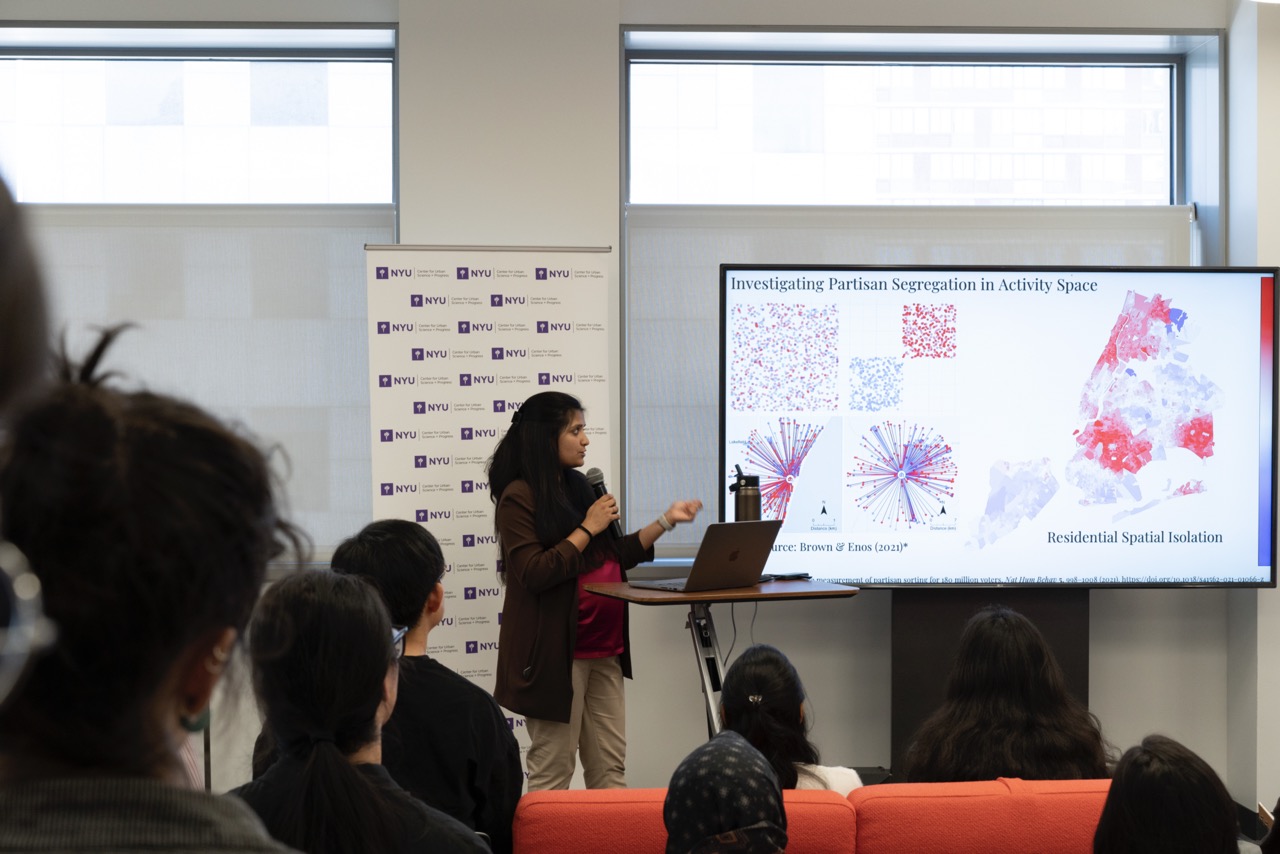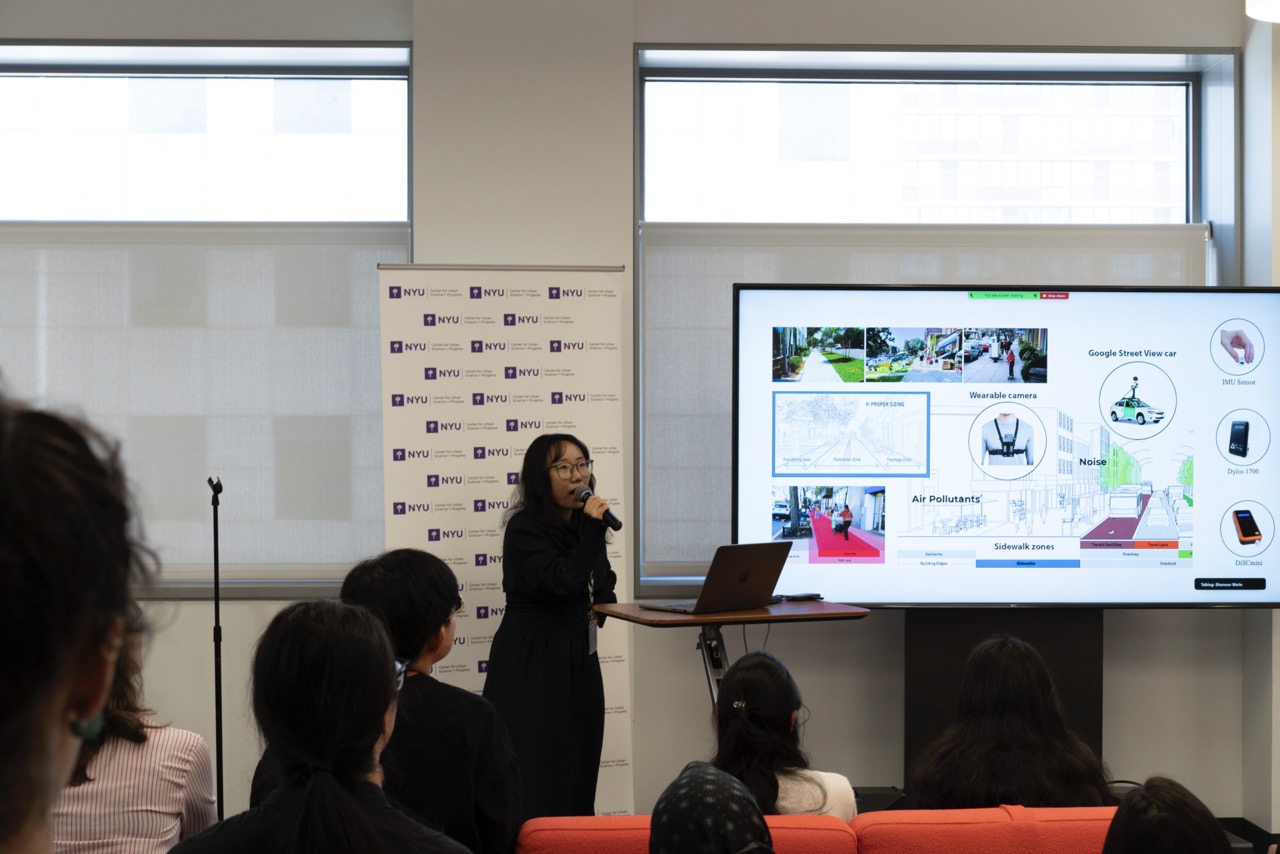CUSP’s Urban Science Faculty Fellows discuss research
Spanning a wide range of topics from modeling urban wind flows to mapping political landscapes

CUSP Director and Institute Professor Maurizio Porfiri introduces the Urban Science Faculty Fellows at the start of the event.
The Center for Urban Science + Progress (CUSP) at NYU Tandon hosted an event highlighting the work of four Urban Science Faculty Fellows on September 11, 2024. These fellows, part of a multidisciplinary two-year postdoctoral cohort, are engaged in research that addresses urban issues through data-driven analyses. The speakers included Azin Ghaffary, Marcel Moran, Mehak Sachdeva, and Zhaoxi Zhang, whose innovative research offers new insights in urban science.
Modeling wind effects across varying building distances in cities
Since 2023, Azin Ghaffary has been collaborating with Luis Ceferino, a visiting research professor at NYU Tandon and assistant professor at UC Berkeley, on a project exploring the effects of wind in densely built urban areas. Ghaffary noted that design codes offer little guidance on this issue, despite the potential impact of wind on building strength, serviceability, and habitability. Ghaffary’s research focuses on the structural response of a building and takes a probabilistic approach to quantifying wind pressure as it’s applied to a building’s surfaces.

“We chose a principal building and one of several interference buildings, each located at different distances from the principal building,” said Ghaffary. “We subjected the two buildings to wind from different angles, then created a numerical model to simulate the effects of wind on the principal building.”
Data from wind tunnel tests in the TPU Aerodynamic Database was used to calculate the final model’s response to different wind loads, and the research takes into account a variety of building configurations within an urban context.
Improving pedestrian safety with cross-city comparisons of crosswalks
Marcel Moran presented “Pedestrian Crossing Distance: Multi-scale Analysis of American and European Cities,” which highlighted research from a paper co-published with Debra Laefer, professor at CUSP and in the Department of Civil and Urban Engineering at NYU Tandon, in the Journal of the American Planning Association.
“I want to make the case that the pedestrian crossing distance—the length that U.S. pedestrians can go from A to B—is important for walkability and for safety,” said Moran. “The work I'm trying to do at CUSP is to study our streets and the public right of way, the most ubiquitous form of public space we have, and how that relates to our quality of life within cities.”

Moran’s research focuses on Paris and San Francisco and uses OpenStreetMap data and the Python package OSMnx developed by Prof. Geoff Boeing of USC to extract information about crosswalks. Moran relied on satellite imagery to supplement this data, as annotations for crosswalks are not always comprehensive from this open-source geographic database. This approach created a more complete picture of the pedestrian environment to enable cross-city comparisons. Notably, the research revealed a correlation between crossing distance and collisions, which has significant implications for urban planning. This research builds a foundation for a more comprehensive strategy for improving pedestrian safety by focusing on entire neighborhoods rather than addressing problematic intersections individually.
Understanding the partisan landscape in the United States across multiple scales
Mehak Sachdeva’s research focuses on understanding the partisan landscape of the United States, and she highlighted three approaches in her presentation.
"Patterns that you see across the cities are not just at a single scale but operate at regional, neighborhood, micro, and even global levels,” said Sachdeva. “In my research, I use models that don't just ask questions at a single spatial scale, but across multiple scales.”

First, Sachdeva analyzed voting data at three scales—county, census block groups (CBG), and voting precincts—to determine what influences the percentage of people voting Democrat in each CBG. Second, Sachdeva used qualitative and computational methods to explore how psychological insights from social media posts relate to political preferences. Third, together with Takahiro Yabe, assistant professor at CUSP and in the Department of Technology Management and Innovation at NYU Tandon, Sachdeva is examining voter registration data to explore partisan segregation in the context of everyday activities. Sachdeva noted a paradigm shift in the transition from a data-first to a process-first approach. Flexible models, especially those customized to specific locations facilitate a better understanding of complex issues and how different factors interact and influence one another in smaller, more detailed contexts.
Urban innovation for human and community health
Zhaoxi Zhang presented a range of research collaborations at CUSP involving sensors, chatbots, and virtual reality. Together with Prince Michael Amegbor, assistant professor at the NYU School of Global Public Health, and Anton Rozhkov, industry assistant professor at CUSP, she is supporting a CUSP capstone project titled “Mapping Urban Stress.” This project explores how stress and mental health issues in urban environments are influenced by a complex mix of environmental and psychosocial factors. Additionally, she serves as the capstone sponsor alongside Yabe for the CUSP capstone project “AI-Driven Urban Chatbot” which aims to use generative AI to enhance public participation and support better decision-making in the planning, design, and policy of public spaces

“Can we trust AI-driven chatbots? Are they reliable and truly beneficial for our society? We want to understand how an AI chatbot can be utilized to drive the public conscience around some key urban challenges such as climate change, food justice, traffic safety, and public service usage," said Zhang.
Zhang has also collaborated with Qi Sun, assistant professor at CUSP and in the Department of Computer Science and Engineering at NYU Tandon, on research that employs virtual reality to simulate flood scenarios, creating a feedback loop between hypothetical flood scenarios and human decision-making to predict human responses in future flood events.





